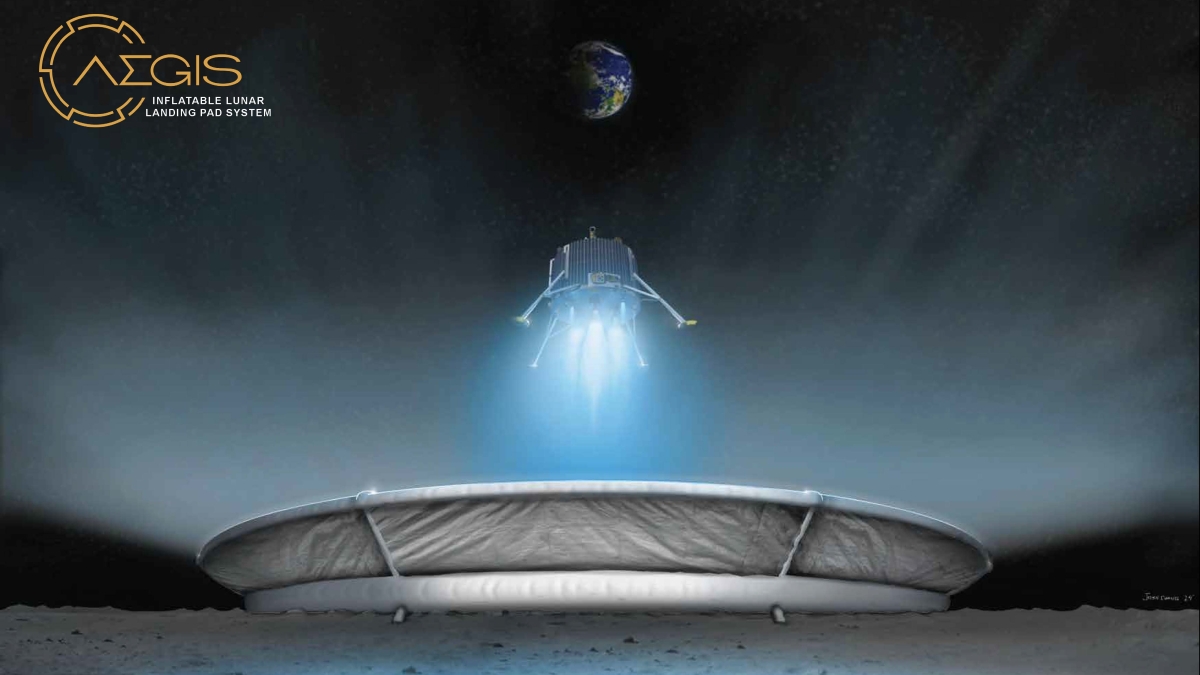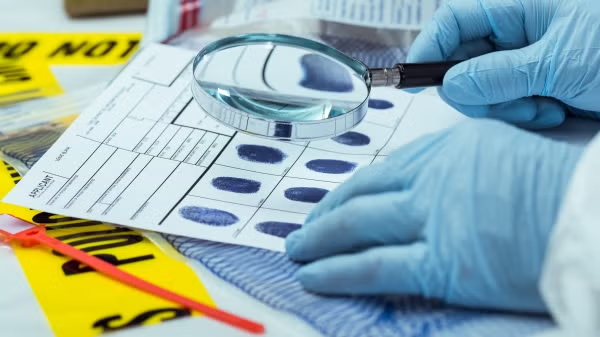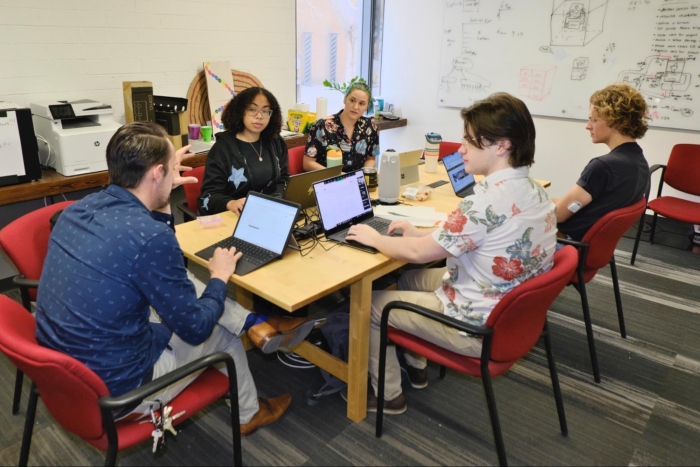ASU student team’s design selected as finalist for 2024 NASA-sponsored BIG Idea Challenge

An artistic rendering of the student-designed AEGIS inflatable lunar landing system, which is capable of autonomously deploying to reduce dust and debris generated by landers. Image courtesy Luminosity Lab/ASU
Arizona State University’s Luminosity Lab student team was recently selected as a finalist in NASA’s Breakthrough, Innovative, and Game-Changing (BIG) Idea Challenge. The group is one of six teams selected by NASA to present at the 2024 BIG Idea Challenge Forum, Nov. 5–7, at NASA Langley Research Center in Hampton, Virginia.
The theme for the 2024 NASA-sponsored engineering competition, “Inflatable Systems for Lunar Operations,” challenges student teams to research, design and demonstrate novel inflatable systems configured for future lunar operations that could help future Artemis missions and beyond.
The Luminosity Lab’s student group designed an inflatable and reusable lunar landing pad system, Aegis, which is capable of autonomously deploying to reduce dust and debris generated by landers; the system will also provide precision landing assistance to enable a safe landing. Being chosen as finalists means students will spend the next several months designing, building and testing their ideas, supported by as much as $150,000 from NASA.
“We have a phenomenal team of students working on this project, and I’m really proud of what they have accomplished by winning this proposal,” said Tyler Smith, senior director at ASU’s Luminosity Lab. “The inflatable landing pad system they designed is both innovative and solves a real issue for landers on the lunar surface.”
Presenting at the finals this fall provides students the opportunity to work with experts from NASA and the commercial space industry, and to receive guidance from faculty advisors from ASU’s School of Earth and Space Exploration (SESE) and Space Technology and Science ("NewSpace") Initiative, such as Professor Jim Bell and Jim Rice, assistant research scientist, both of whom have been actively involved with several NASA solar system exploration missions.
"The team at Luminosity Lab has done a fantastic job pitching an elegant solution to NASA's call for innovative inflatable technologies on the moon,” said Bell. “A number of us in SESE and ASU/NewSpace are eager to work with these talented students to help them mature their design and test/prototype it first here in Arizona and then later this year at NASA."
The BIG Idea Challenge is an initiative supporting NASA’s Space Technology Mission Directorate’s Game Changing Development program’s efforts to rapidly mature innovative and high-impact capabilities and technologies for infusion in a broad array of future NASA missions. This engineering design competition seeks innovative ideas from the higher education academic community for new topics each year relevant to current NASA Space Technology priorities.
NASA’s Space Technology Mission Directorate sponsors the BIG Idea Challenge through a unique collaboration between its Game Changing Development program and the agency’s Office of STEM Engagement. It is managed by a partnership between the National Institute of Aerospace and the Johns Hopkins Applied Physics Laboratory.
More Science and technology

A spectacular celestial event: Nova explosion in Northern Crown constellation expected within 18 months
Within the next year to 18 months, stargazers around the world will witness a dazzling celestial event as a “new” star appears in the constellation Corona Borealis, also known as the Northern Crown.…

ASU researcher points to fingerprints as a new way to detect drug use
Collecting urine samples, blood or hair are currently the most common ways to detect drug use, but Arizona State University researcher Min Jang may have discovered something better.Fingerprints…

Learn about the secrets of forensic science straight from the experts
Over the next week, true crime enthusiasts will have a rare opportunity to discover the secrets of forensic science as experts share techniques for tracking down criminals.Behind Crime Scene…


